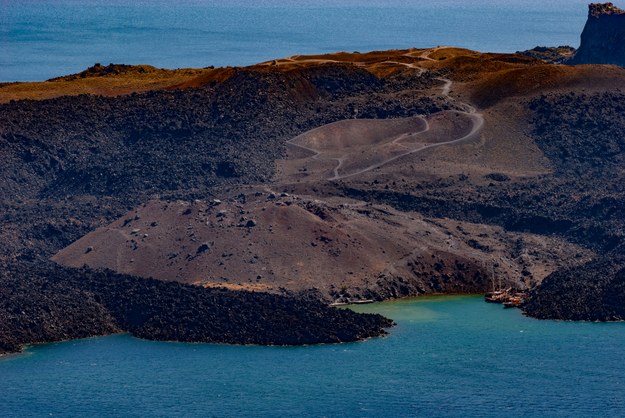Volcanic craters are not as “sleepy” as scientists thought
 photo: Shutterstock
photo: Shutterstock
When two lithospheric plates meet, a subduction of one under the other occurs and a so-called subduction zone is formed, which is linked to the formation of volcanic arcs. One such area is found on the border between the Aegean and Cretan seas. Around the year 1600 BC, a major volcanic eruption took place and left us with the crater today known as the beautiful and very popular island of Santorini. However, this wasn’t the beginning of the volcanic activity in this area. It started about half a million years ago. “That was also one of the goals of our research, to find out how far the history goes,” says Günther Kletetschka. Due to the dense population and touristic popularity of this place, scientists wondered whether they could describe the past volcanic activity and maybe predict how the volcano will behave in the future. “On the seismograph that scans the sediments of this area, we saw layers… but what do they mean? You can only guess until you have hard data, so that is why we went to this area,” recounts Günther Kletetschka.
 doc. RNDr. Günther Kletetschka, Ph.D., photo: archive of Günther Kletetschka
doc. RNDr. Günther Kletetschka, Ph.D., photo: archive of Günther Kletetschka
A team of scientists set out directly towards the center of the crater, where they carried out four drillings to obtain samples of the sediment. Some of it was dated to the major eruption around 1600 BC, but the activity visibly went on. In the middle of the now-flooded crater, there is a “volcano” which started to form around the year 200 BC. It produced lava which was documented in the historical sources. The data from the seismograph however showed also thick layers of sediment that pointed towards a major eruption. But scientists didn’t know when it took place. With the help of analysis of samples from the drillings, these sediments could be dated back to a submarine eruption of this volcano that produced more than 3 km3 of material. “It turned out that the sediment formed in 726 AC, which is just a few decades before the city of Prague began to be built,” describes Günther Kletetschka to put this event into a historical context.
 Photo: archive of Günther Kletetschka
Photo: archive of Günther Kletetschka
The new study thus shows that volcanic craters are not as “sleepy” as scientists previously thought. The craters can produce large amounts of material into their surroundings even though it was presumed they should not be able to do that in such a short time after a major volcanic eruption. Even though the research took place in Santorini, such volcanic craters are located in subduction areas all over the world, for example in Indonesia or Japan.
Link to the study:
Preine, J., Karstens, J., Hübscher, C. et al. Hazardous explosive eruptions of a recharging multi-cyclic island arc caldera. Nat. Geosci. (2024). https://doi.org/10.1038/s41561-024-01392-7
Document Actions